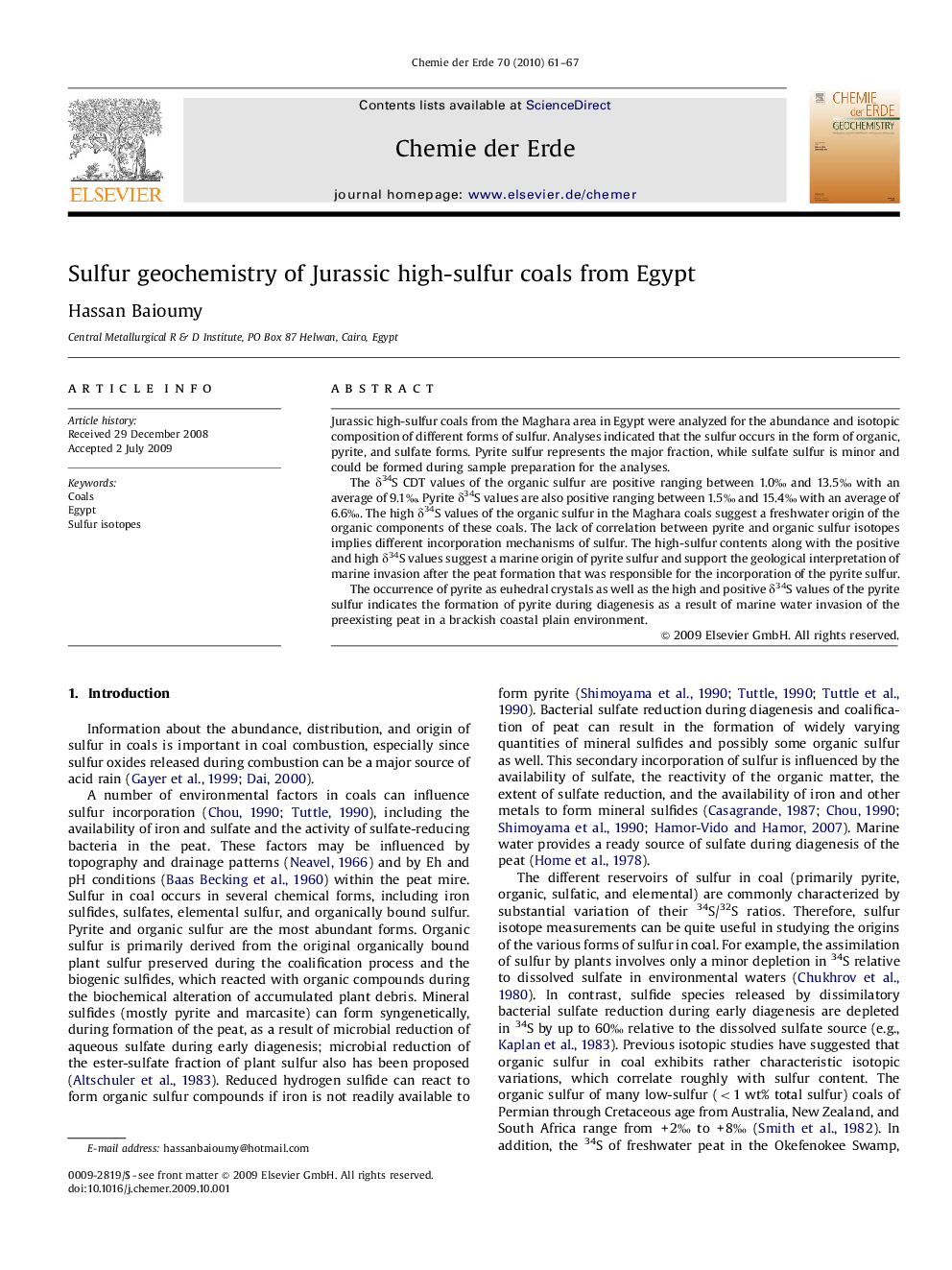| Article ID | Journal | Published Year | Pages | File Type |
|---|---|---|---|---|
| 4407124 | Chemie der Erde - Geochemistry | 2010 | 7 Pages |
Jurassic high-sulfur coals from the Maghara area in Egypt were analyzed for the abundance and isotopic composition of different forms of sulfur. Analyses indicated that the sulfur occurs in the form of organic, pyrite, and sulfate forms. Pyrite sulfur represents the major fraction, while sulfate sulfur is minor and could be formed during sample preparation for the analyses.The δ34S CDT values of the organic sulfur are positive ranging between 1.0‰ and 13.5‰ with an average of 9.1‰. Pyrite δ34S values are also positive ranging between 1.5‰ and 15.4‰ with an average of 6.6‰. The high δ34S values of the organic sulfur in the Maghara coals suggest a freshwater origin of the organic components of these coals. The lack of correlation between pyrite and organic sulfur isotopes implies different incorporation mechanisms of sulfur. The high-sulfur contents along with the positive and high δ34S values suggest a marine origin of pyrite sulfur and support the geological interpretation of marine invasion after the peat formation that was responsible for the incorporation of the pyrite sulfur.The occurrence of pyrite as euhedral crystals as well as the high and positive δ34S values of the pyrite sulfur indicates the formation of pyrite during diagenesis as a result of marine water invasion of the preexisting peat in a brackish coastal plain environment.
